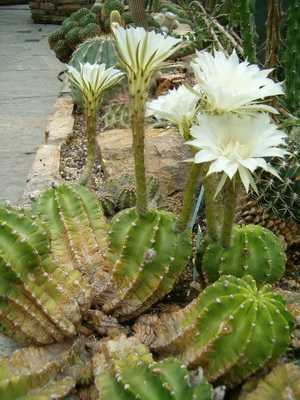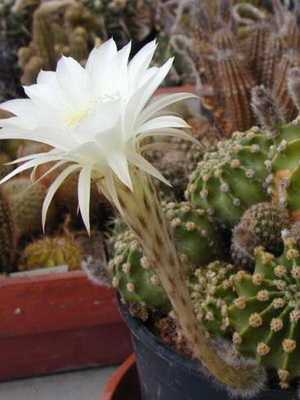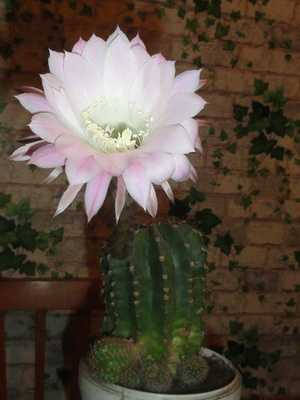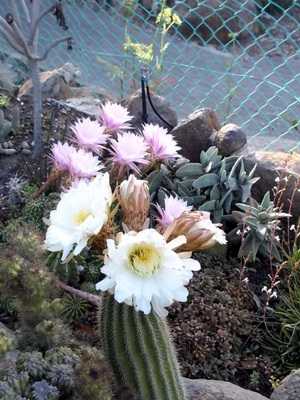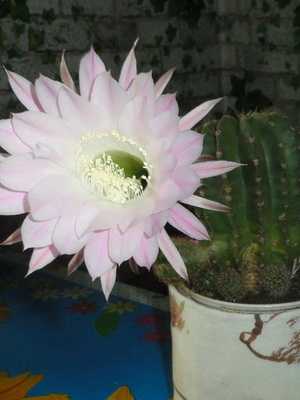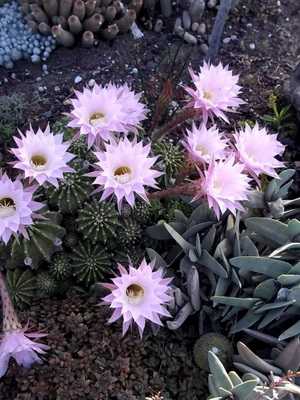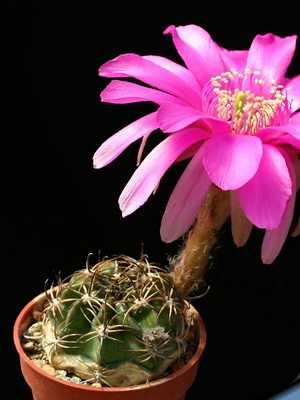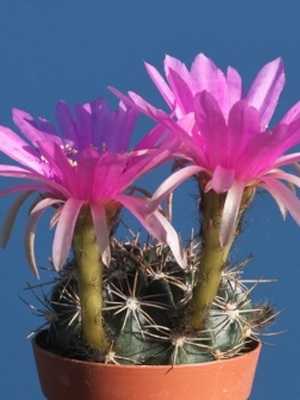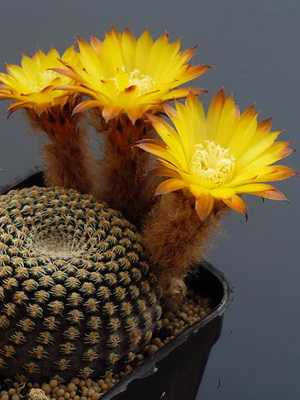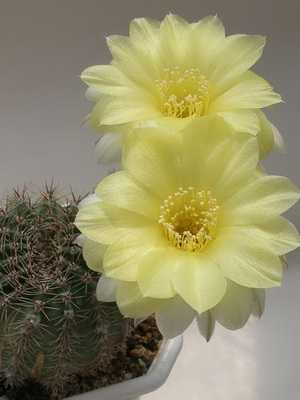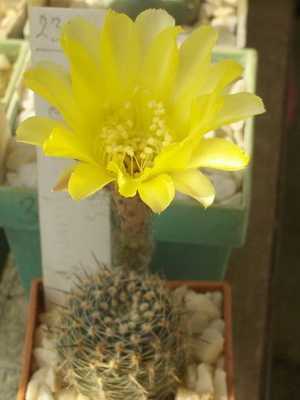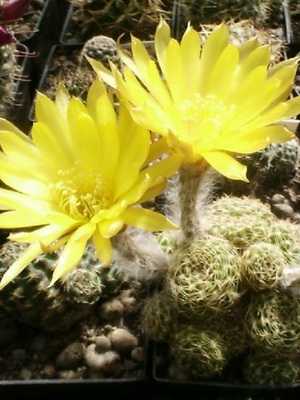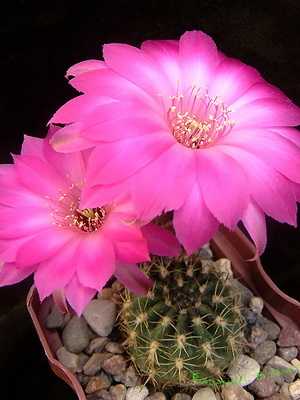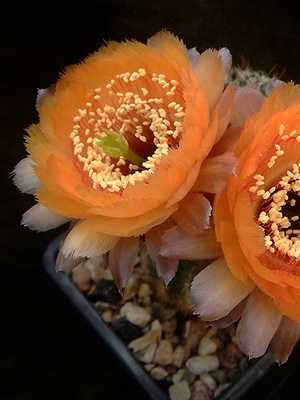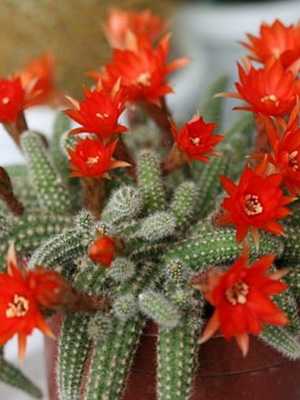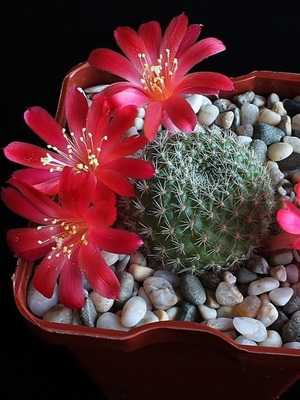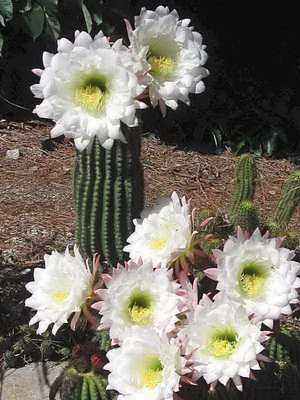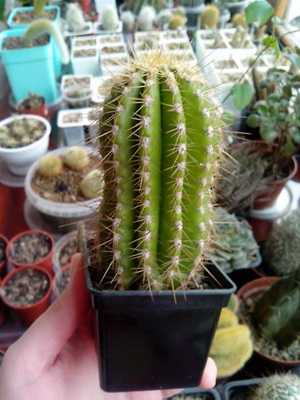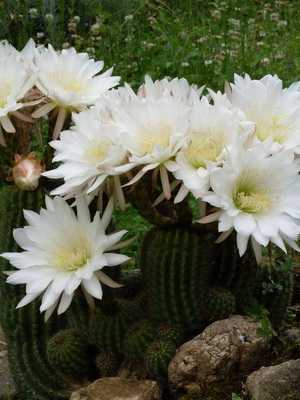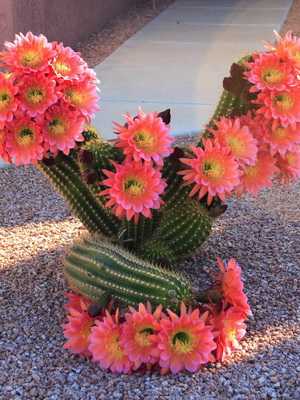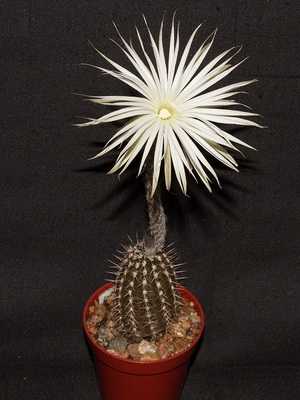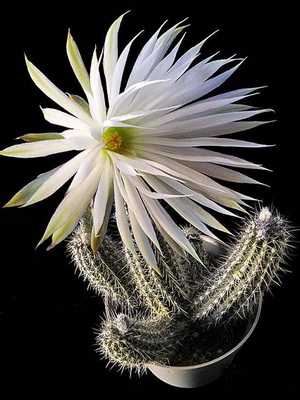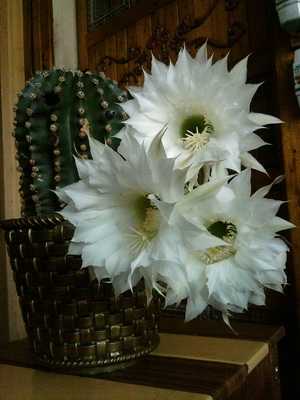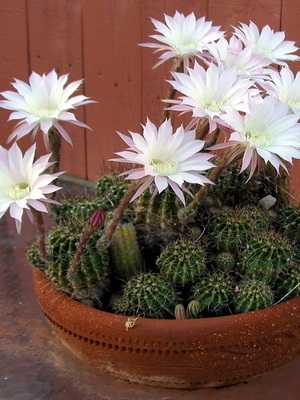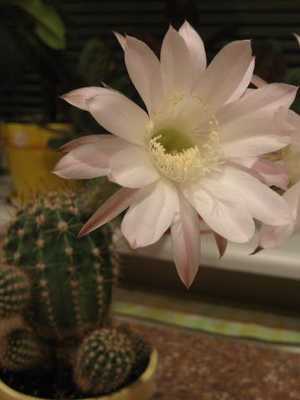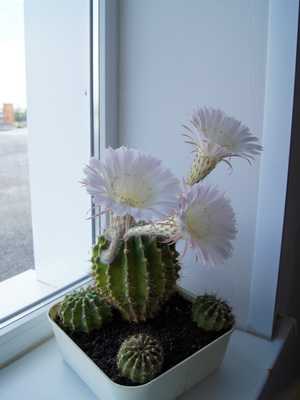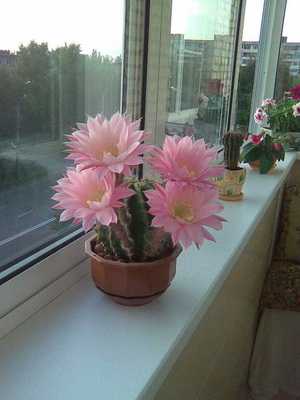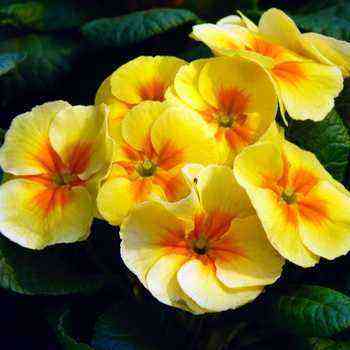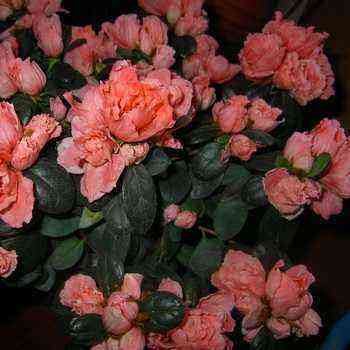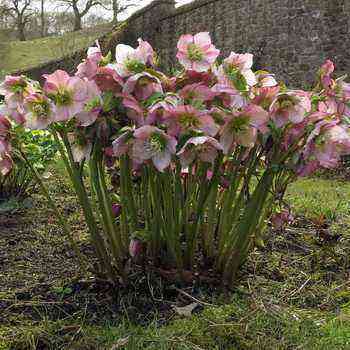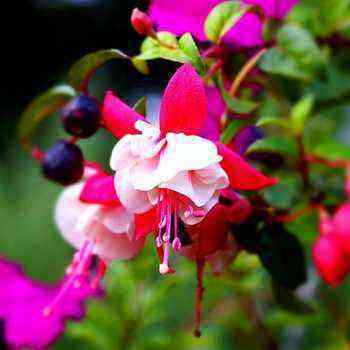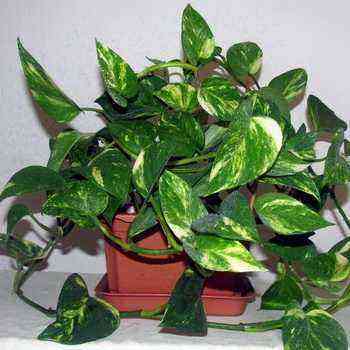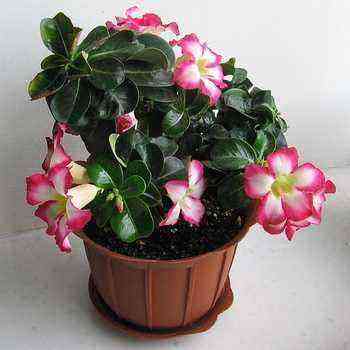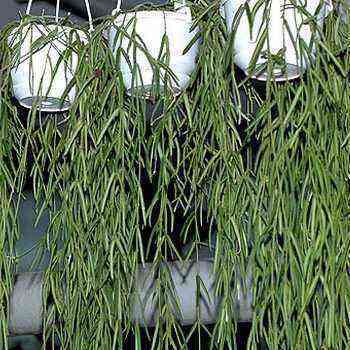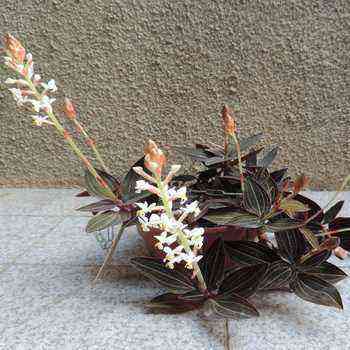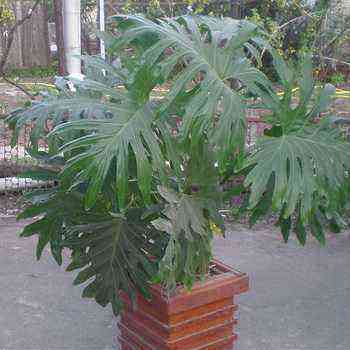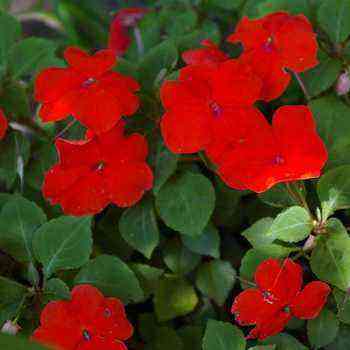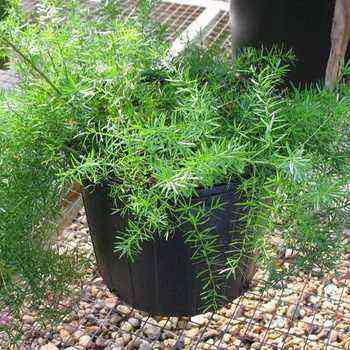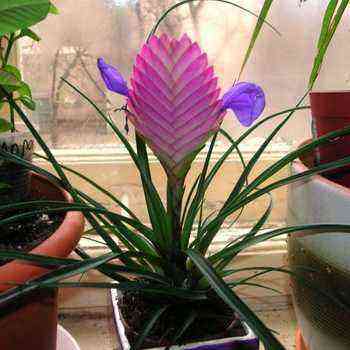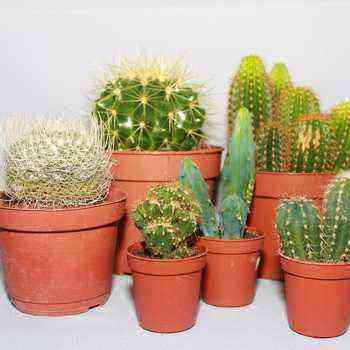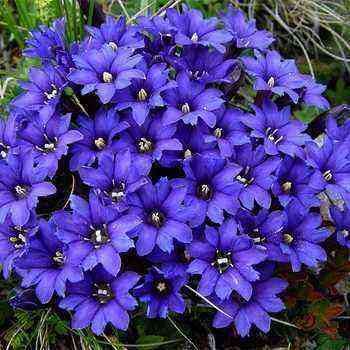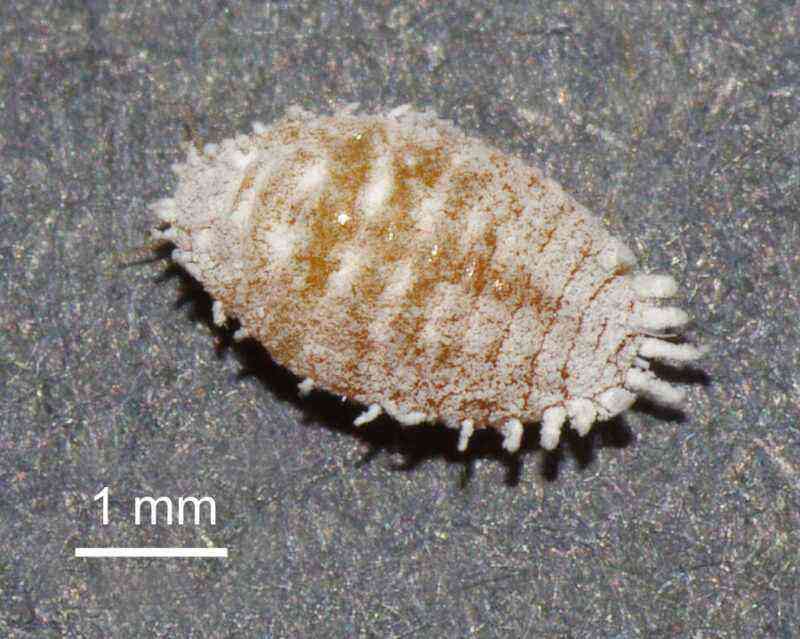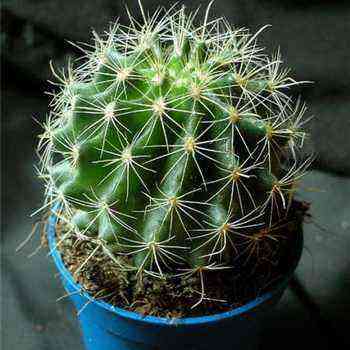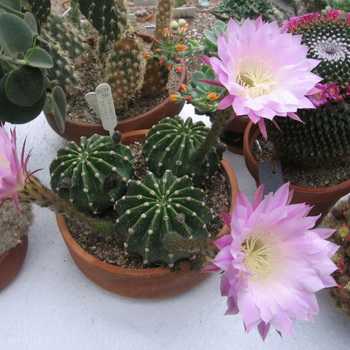
Types of Echinopsis cacti and their flowering
Home flower Echinopsis (Echinopsis) Is a classic-looking cactus. Widespread in indoor floriculture “green hedgehogs” are rootless hybrid Echinopsis. In addition to them, about 30 more species of Echinopsis can be found in culture (pseudo-lobivia are included in this group). Including species that have been known for a long time, but have become rare due to disorderly hybridization.
It’s first and foremost amazing Echinopsis eiriesi (B. eyriesii). In “real” plants of this species, the dark green stem has 11-18 high and rather sharp ribs, on which white fluffy areola balls are located. The spines are short, barely protruding from the areola fluff. During flowering, this Echinopsis throws out long, up to 25 cm, snow-white arrows with large petals.
Unlike him, Echinopsis oxygon (B. oxigona) sharp and numerous spines are well expressed. This species is a real giant with spherical stems reaching 25 cm in diameter5.
As you can see in the photo, the flowers of Echinopsis oxygon have a pink-red hue:
In recent years, it has become especially popular Echinopsis subdenudata (B. subdenudata), which looks completely unusual, because it has practically no thorns, and its decorative cultivar ‘Fuzzy Navel’ is almost miniature, with large white pubescent areoles.
Of the species that sometimes stood out in the genus of pseudo-lobsters, Echinopsis obrepanda (B. obrepanda) should be called, surprising with an extraordinary natural variety of forms, differing in size, habit, development of thorns, many of the previously described Echinopsis species in reality turned out to be only natural forms of this incredibly variable species.
Pay attention to the photo of this type of Echinopsis – its flowers are painted in all sorts of shades, from white to bright red:
Echinopsis is most consistent with our idea of a typical, real cactus. The generic name “Echinopsis” (Echinopsis) means in translation into Russian something like “hedgehogs”. “Green Hedgehogs” is about Echinopsis. Indeed, studded with real needle-shaped thorns, truly green, they represent the most “cactus” cacti. We add to this the luxurious, but at a later age and relatively rarely appearing flowers, opening only for a few hours and striking in contrast with the unsightly stem, funny children growing in the most unexpected places. Almost all home stories about cacti, prejudices regarding these plants, cartoons and tales are associated with Echinopsis.
Here you can see photos of various types of Echinopsis blooming cacti:
Types of cacti Echinopsis lobivia (with photo)
The most extensive group of cacti now included in the genus Echinopsis is the well-known Lobivia cactusists. Many species and forms of these plants are known, the genetic links between which are very complex, as well as the links with close groups – the Echinopsis proper, pseudo-lobsters, and rebuts. Lobivia cacti are very diverse in appearance.
Look at the photo – all lobivia are united by the origin from the mountainous regions and the large flowers that open up during the day are characteristic of all these plants:
Like mountain cacti, they need plenty of sunshine, fresh air and cold temperatures during dormancy. Otherwise, they do not bloom, stretch out ugly, lose the beauty of their thorns. In general, the situation is the same as with Echinocereus: they are able to tolerate indoor conditions that are not suitable for them, but nothing good will come of it. Lobivia can also be started by novice collectors, but only if they have the opportunity to give these plants full sun in the spring and summer. Lobivia are categorically not suitable for placement among flowers on a windowsill or for interior decoration.
An unpretentious and widespread lobivia is represented by a huge number of forms – Echinopsis (Lobivia) aurea (aurea) – ribbed, like real Echinopsis, with a variety of spines: short spine-like, long needle-like or thin hair-like.
As you can see in the photo, the lobivia aurea cactus has spectacular, large flowers of a yellow hue, for which it is often called “golden”:
Another bright and very variable type of lobivia is E. (L.) marsoneri (marsoneri), with long narrow tubercles, long (up to 6 cm) and often curved at the ends with spines and characteristic flowers, the wide mouth of which is painted black ( this unusual color is especially contrasting on the yellow-flowered form of E. (L.) jajoiana var.nigrostoma (nigrostoma) – in other forms and varieties of this species, the flowers are red or orange.
Below is a selection of photos of different types of lobivia:
Chamecereus cactus: photo and home care
According to the modern system, several more popular groups of cacti belong to the Echinopsis. It is impossible not to mention the wonderful miniature bush, better known by its former name – chamecereus (E. chamaecereus). The beautifully growing and surprisingly hardy cactus chamecereus, despite its diminutiveness, softness, weak thorns, withstands the brightest sun (only slightly reddens), and negative temperatures (only slightly shrivels), and violations of all the rules for keeping cacti in the house (just not blooms). If at least minimal conditions of normal existence are created for him – light, watering during the growth period and dry cool wintering, he blooms magnificently.
Pay attention to the photo of chamecerius – it blooms with large red flowers, unexpectedly numerous on such a small plant:
Chamecereus reproduces very easily by baby twigs, and can bloom already in the second year of life. The amazing readiness of chamecereus to bloom did not go unnoticed by breeders. To the advantages of this plant, through hybridization, they added the variety of flowers of other cacti, mainly lobivia. Hybrid forms of chamecereus are quite common in culture, but, in my opinion, do not have a collection or special decorative value. The chlorophyll-free form of chamecereus, which has recently spread in trade, growing, of course, only in a grafted form, is a pitiful shadow of natural plants. Its anemic yellowness and fragility make one wonder how it is still preserved in culture. When caring for chamecereus at home, be prepared for the fact that these cacti are the first to fall prey to the flat red mite. This is his Achilles heel.
Here you can see a photo of Echinopsis species chamecerius:
Types of cacti trichocereus and setechinopsis (with photo)
In this section of the article, you can see photos and find out the names of two more types of Echinopsis.
And another large group of cacti, previously considered a separate genus, joined the Echinopsis genus – this is trichocereus (Trichocereus). Trichocereus are definitely Echinopsis.
The photo shows that the trichocereus has exactly the same large fragrant long-tubular flower-stars and very similar stems, only more elongated than that of Echinopsis:
In warm regions, abundantly flowering trichocereus cacti and close to them, less known, but decorated with the same luxurious flowers Helianthocereus, also combined with Echinopsis, are common garden plants. In our country, they can grow and bloom only in protected ground. For indoor culture and for small-sized cactus greenhouses, they are too large, therefore they are not widespread in our country, and we see them blooming mainly in photographs. In the collections, you can find the species of trichocereus plow E. (T.) pachanoi and some other species used as rootstocks. Apparently, with the spread of winter gardens and container planting of succulents in the open air, trichocereuses may become more popular.
Look at the photo of trichocereus cacti – their flowers are truly luxurious:
Another interesting miniature Echinopsis, also a representative of the former independent and monotypic (that is, consisting of only one species) genus, Setiechinopsis mirabilis. This plant sets seeds without over-pollination, germinates easily and quickly – in two years! – reaches maturity and blooms.
As you can see in the photo, the flowering of the Echinopsis cactus of this species deserves special attention: on a tiny 2-centimeter column at night, a reduced copy of a beautiful, also fragrant flower is revealed:
Echinopsis does not have any specific requirements for care. The main problem is that very soon, as it grows, it loses the decorative charm of a baby cactus and turns into something elongated and ugly. In order for Echinopsis to remain blooming, these plants have to be constantly renewed with the help of sowing.
How to make Echinopsis bloom at home
Echinopsis have such a long history of cultivation in rooms, and their ancestors – natural species – interbreed with each other so easily that everything that we see on our windows is a clear result of hybridization and long haphazard selection. In general, cacti are “mongrels”. And just like the pooch, cute and adorable.
It is correct to call them “Echinopsis hybrid“(Echinopsis hybr.). The only significant difference between real Echinopsis and some “ideal cactus” is that they are not desert plants. Unlike the latter, they feel very good in a nutritious substrate (with the addition of humus, peat, leafy soil), while the substrate can be heavier than for most other cacti. And the dishes when caring for Echinopsis, respectively, can be used relatively larger.
These succulents, especially in summer, can be watered more abundantly than their dry-loving relatives, fertilized (even with organic, but not very concentrated fertilizers), and often sprayed. They will do without the scorching sun, although, previously prepared, they will stand all summer in the sun without burns. They do not need heat: in the middle lane, they can spend the summer months in the open air. It is thanks to this undemandingness to home care that the Echinopsis have taken root so well in the rooms. Even violating all the rules for caring for cacti (excessive watering, winter watering, fertilization, limiting illumination), a non-cactus florist will not destroy Echinopsis. The unfavorable consequences of improper care will be an elongated and shapeless stem, unsightly thorns, numerous skinny children, rare flowering or its absence.
What if you have just such a neglected plant? How to make Echinopsis bloom in your home? First, you need to imagine what a beautiful and healthy hybrid Echinopsis should be like. It is a spherical, short-cylindrical, radially symmetric plant up to 15 cm in diameter with age, dark green in color, with strong, shiny, usually dark spines, a small number of children – only in mature specimens. If the plant you got can, in principle, still be brought to this state, try to do it as follows. Carefully (without breaking the surrounding thorns or leaving a scar on the stem), remove if possible all the babies (you can leave a couple at the base of the stem, as well as those that cannot be removed without serious injury to the mother plant). Then transplant the plant into a new pot of nutrient medium that is large enough to accommodate its root system. Deepen the lower – narrowed, corky – part of the stem into the upper drainage, after setting the plant straight. And then provide him with the necessary care. It will transform before our eyes and bloom the next year after this procedure.
If the description of Echinopsis that fell into your hands leaves much to be desired (the plant is more neglected, elongated, has constrictions – traces of diseases and periods of growth in the dark), scars, spots, broken thorns, but still you are sorry to part with it, try radically rejuvenate it. To care for such an Echinopsis cactus, it is necessary to cut off the upper part of the stem at a distance from the top, slightly exceeding the diameter of the stem (preferably at the point of the narrowing of the stem). Then cut off the outer edge of the cut and let the resulting cuttings dry. After that, it can be put cut down on an empty pot and left in this position for about a month, and if the operation was performed in autumn or winter – until spring. Roots from the central part of the cutting can already form during this period. In any case, after this period, the plant is placed directly in a pot filled with planting substrate with a top layer (0,5 cm) of coarse sand or fine gravel. A healthy stalk will quickly take root with careful watering and can later grow into
decent Echinopsis.
Finally, a good plant can be obtained with proper care for the baby of the Echinopsis cactus at home. Usually, the babies of these succulents have thick, short, “looking” roots already on the mother plant, and they can be immediately placed in a pot with a substrate for rooting (the “umbilical cord” connecting them to the mother plant is so narrow that the wound is very small, not requiring a long drying period).
As you can see in the photo, the baby of the Echinopsis flower grows quickly in good conditions and can bloom in the third year after planting:
However, if you want to get not just a good, but a beautiful plant, it must be grown from seeds. Prolonged vegetative reproduction causes a weakening of the decorative qualities of Echinopsis – the formation of children increases, and the flowering weakens. In addition, vegetative reproduction leads to the accumulation of various diseases.
Echinopsis seeds can be obtained by yourself by dusting two simultaneously flowering genetically different (not from children from one mother plant!) Plants. The seeds of Echinopsis are large, germinate easily, seedlings grow quickly, amicably. They can be expected to bloom in the fourth or fifth year of life.
Among other indoor plants, Echinopsis are more susceptible to attack by red ticks, scale insects and scale insects. The first is usually found by rust covering young tissues at the top of the plants, the rest are clearly visible on the stem or roots (when transplanting). The arrest of growth and the absence of flowering of Echinopsis in seemingly favorable conditions can be caused by precisely these harmful organisms. Precautionary pesticide sprays and periodic plant inspections can help avoid the negative effects of pests. These succulents are resistant to fungal and bacterial diseases.
Here you can see a photo of Ezinopsis cactus care at home:
